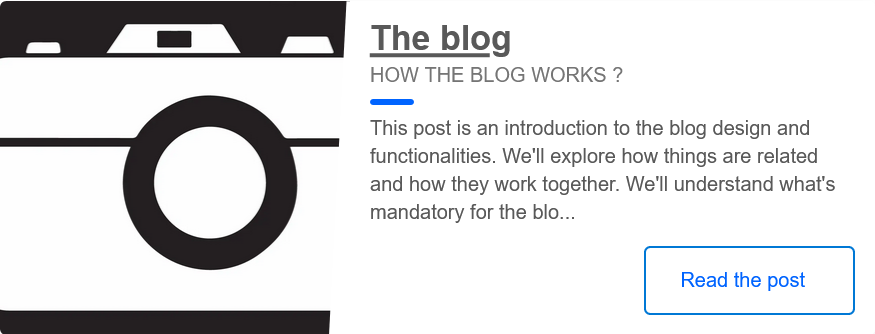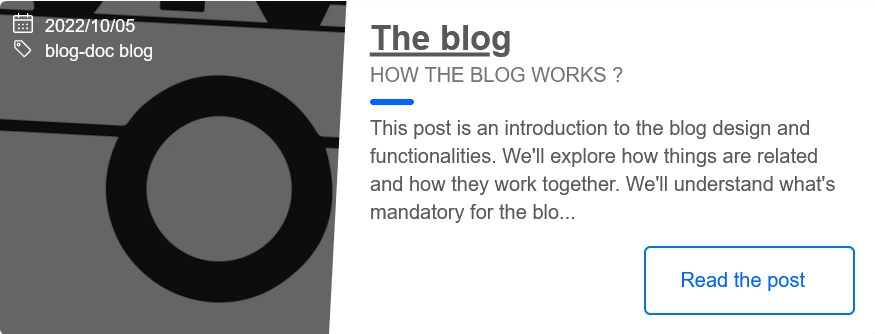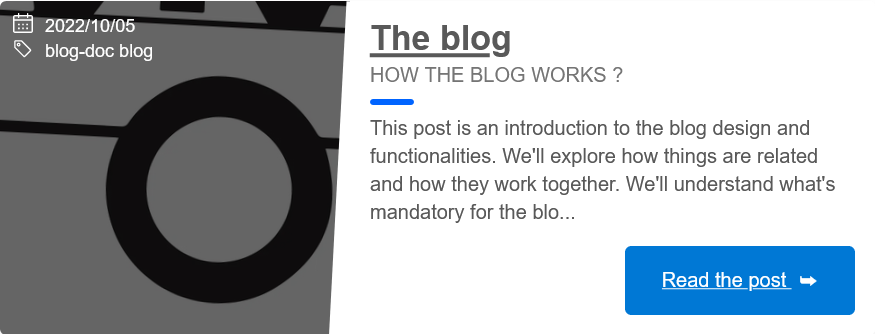This post will give you an overview of the blog's design and features. We’ll look at how different elements are connected and how they work together. We'll also break down what’s essential for the blog to function properly and what’s optional.
Blog Design & Functionality
You’ll see that the homepage, archive page, and each individual tag page all have similar designs. They show a list of posts, though each page has slight design differences, with only the blog being paginated.
The blog sorts posts by their publication date, from newest to oldest, and displays the number of posts per page as set in the settings. If the total number of posts is fewer than the defined number, pagination won’t be applied!
Single Post Preview
Each post is shown as a card like this one:

The design for this card is inspired by
Chyno Deluxe, which you can check out on his
Blog Cards CodePen.
The card
consists of two parts:
- A featured image of the post
- A brief preview of the post
The featured image is optional. If you don’t set one, a default fallback image will be used. You can change this fallback image to whatever suits your needs:
- Upload your desired image to the gallery.
- Select it in the Post Preview Fallback Image modal under the site's settings.
Publishing Date & Tags
When you hover over a post preview, the featured image zooms in slightly and rotates, covered by an overlay. This overlay shows the post’s publishing date and any associated tags, if there are any. Yes, tags are optional, but you must provide a the required properties/fields mentioned earlier in No description or tags post.
Here’s how the hovered card looks:

Brief Preview
The right side of the card includes the post’s title, description, the first 180 characters, and a Read the post button that links to the full post. When you hover over this button, it expands slightly to the left, changes to a blue background with white text, and features an arrow to the right:

Pagination
As mentioned, pagination only kicks in if your blog has more posts than the defined number per page. Once you hit that threshold, pagination will appear at the bottom of each blog page.
The homepage will have a pagination link to Older Posts (page 1) and a left
chevron icon to navigate to the last page.
The last page will have a pagination link to
Newer Posts and a right chevron icon to navigate to the first page.
Pages
in between will have links to Older Posts, Newer Posts,
and chevron icons to navigate to both the first and last pages.
That’s all for now! I’ll dive deeper into pagination in a future post.
See you next time 😉